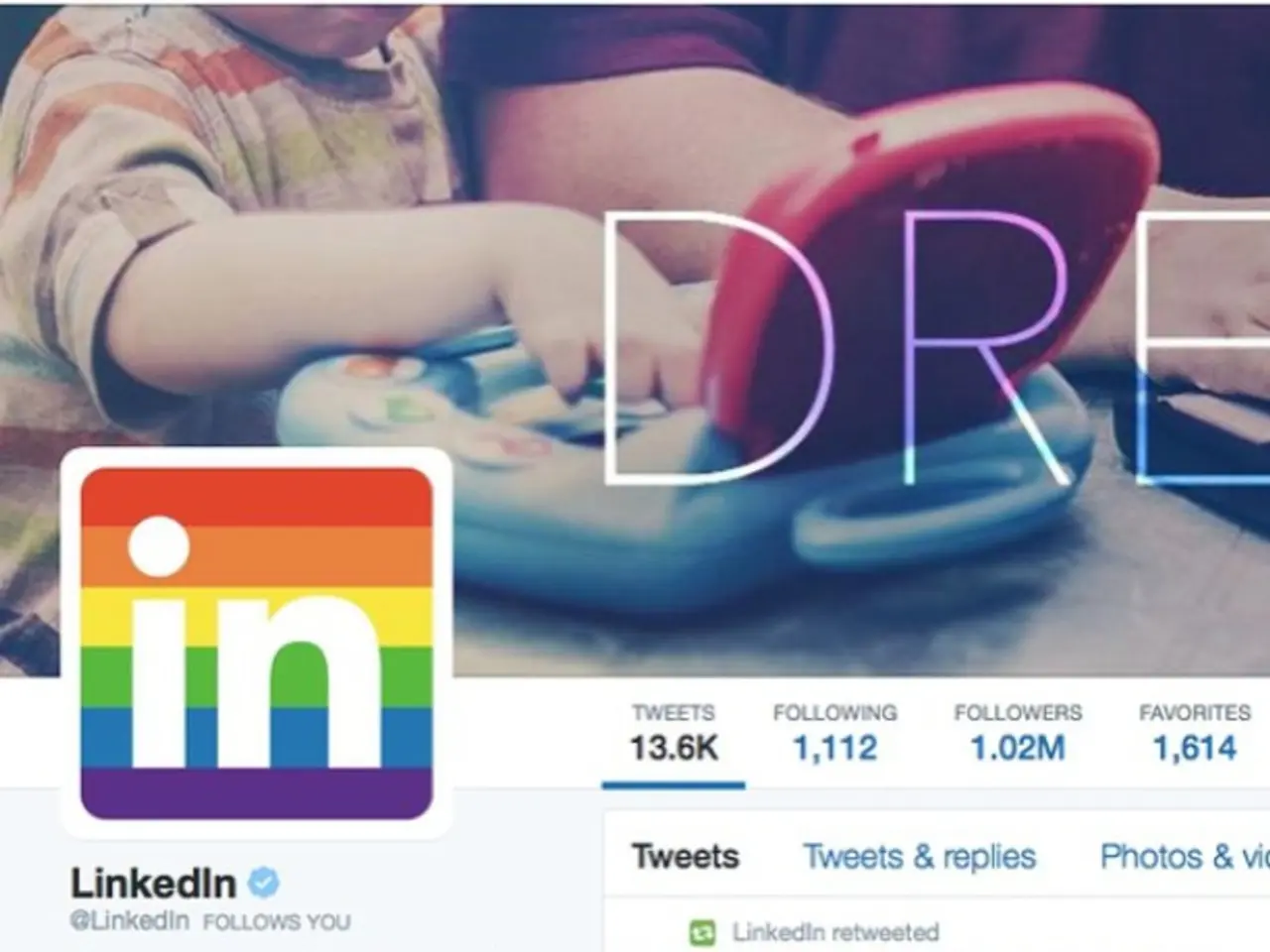Artificial Intelligence Expansion on User Data Incorporation Begins for LinkedIn, Starting from November 3
LinkedIn, the professional networking platform, has announced a significant policy change that will see the implementation of AI-generated content and data sharing with affiliate Microsoft for personalized advertisements across the Microsoft family of companies, starting November 3, 2025.
The change is part of LinkedIn's broader strategy to integrate artificial intelligence throughout its professional networking ecosystem. The platform's approach to AI training includes the use of synthetic datasets and publicly available information supplementation to ensure diverse, representative information.
LinkedIn will collect multiple categories of user information for AI training purposes, including profile data, generative AI usage data, jobs-related data, and member content. However, private messages, log-in credentials, payment methods, credit card data, and member-provided salary data or job application data attributable to specific members will not be used for training.
Age-based protections will be in place, with LinkedIn not using data from members it believes could be under 18 years old for training content-generating AI models. The implementation timeline provides members with advance notice and control options, with the new policies taking effect on November 3, 2025.
LinkedIn's generative AI features serve multiple purposes within the professional networking ecosystem, including job matching capabilities. The platform will begin using member data and content to train generative AI models starting November 3, 2025.
The policy change affects members globally with varying implementation based on regional privacy regulations. Members in the European Economic Area, Switzerland, the United Kingdom, Canada, and Hong Kong will have opt-out controls for data usage in AI training. Users can submit objections to AI training for non-content generating models through LinkedIn's Data Processing Objection form.
LinkedIn will leverage automated techniques, including generative AI-powered tools, to maintain service safety, security, and compliance with user terms, policies, and applicable law. The platform has also emphasised member education as a crucial component of its rollout strategy, providing detailed resources to help members make informed decisions.
The announcement comes as social media platforms face increasing scrutiny over AI training practices. LinkedIn's approach addresses many concerns related to transparency, user consent, and regional compliance. The policy changes align with broader AI integration trends in professional platforms.
From November 3, 2025, in addition to the global implementation, the United States, Canada, Australia, and Japan will receive additional data shared with LinkedIn members to train Microsoft's personalized AI models. Copyright considerations influence LinkedIn's approach to AI training, with options for users to object to content usage.
External providers like Microsoft's Azure OpenAI services may be used to train LinkedIn's generative AI models. LinkedIn's AI training policy includes the use of AI-generated content for various purposes, such as Writing Suggestions, Suggested Posts, and resume data sharing with hiring managers.
In summary, LinkedIn's policy change marks a significant step in the integration of AI within the professional networking ecosystem. The platform's approach to AI training is designed to maintain user privacy, transparency, and control, while leveraging the power of AI to enhance job matching capabilities and personalised user experiences.
Read also:
- Global Content Dissemination Through Cross-Linguistic Voiceovers
- Development of Restaurant Apps: Expenses and Essential Elements
- Time is of the essence
- European transportation's sustainability and competitiveness rely on a "green industrial agreement" that serves the interests of both corporations and residents, as discussed in an Editorial from August 2024.







